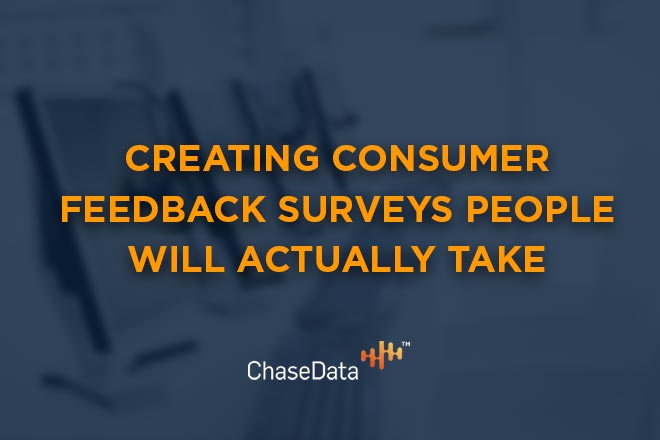October, 16 2019 3:29 pm

The benefits of consumer feedback surveys are well-documented in the contact center and customer service industries. What is less well-known is an approach for getting consumers to actually take those surveys and provide meaningful information.
Consumer feedback surveys are notorious for being disliked and written off as boring, unnecessary, or a waste of time by customers who are presented with them. Even when presented with incentives, people generally overlook these surveys. With that in mind, how are companies who rely on the information gleaned from them supposed to compile that data? What can be done to encourage consumers to actually participate in surveys rather than seeing them as an inconvenience?
Here are some tips from industry insiders on creating consumer feedback surveys that your customers and clients will actually want to take:
Before you can begin creating an effective consumer feedback questionnaire, consider first who you’re polling. Who is your audience? What type of questions will appeal to the demographic you are generally trying to reach and will they have time to respond in the methods you are considering asking your questions?
Busy parents may not have time for long-winded, open-response questions. Likewise, a business owner probably won’t have time to reply to a feedback survey that takes over an hour to complete. The business owner might be more likely to use more technical jargon, though, whereas the everyday user is less likely to be receptive to this kind of language. Tailoring questions and responses to your audience will increase the likelihood that people will actually respond.
Everyone wants to feel like their opinions are valuable. Put yourself in the shoes of your target consumer and ask yourself if the kind of questions and the format of your survey are right for their lifestyle and knowledge. If so, you’ve got the makings of a good survey. If not, it’s time to go back to the drawing board.
Once you understand the basics of who you’re targeting your survey toward, it’s time to begin building the structure of your questions. What do you need to know? Start by outlining that information. The exact details will be unique to your company’s needs, but some suggestions include the following:
It is important to note that your customer feedback survey could focus on a particular aspect from this list, all of these elements, or any combination thereof. You could also create multiple surveys based on these different data sets. There are no hard and fast rules in regard to what your surveys have to look like. Simply build based on what you need to know and who you’re collecting information from, and the rest will follow.
You know who you’re talking to and what you need to know. Now it’s time to decide exactly what to ask your consumers.
The actual wording of your questions is less important than how you present them. Some tips for offering consumers the kind of questions that they are likely to consider answering include:
Once you have the perfect consumer feedback surveys created, it’s time to get them in front of the people whose opinions you need to collect. How you do that will impact how well they are received - and how much information you glean from them.
It’s a good idea to think outside of the box when it comes to finding ways to distribute your feedback surveys. While email is traditional, most people receive dozens if not hundreds of emails a day. That can make sending an email requesting feedback like shouting into an already noisy crowd; you’re highly unlikely to get a response.
Instead, look for other ways to present your feedback opportunity to your consumer. Tack it on at the end of an email as part of your signature. Simple graphics with a prompt asking how your representative did in answering questions or providing service gives you everything you need to collect basic survey information. For more detailed data, provide a link for consumers to offer expanded thoughts. You might be surprised at how many voluntarily do so!
Another good idea is presenting feedback opportunities at the end of experiences. Near the end of a live chat, instant message exchange, or phone call with a service representative, a feedback survey is aptly-timed. The service is still fresh in the consumer’s mind, and they are more likely to take the time to fill out the survey then than almost any other time. Be sure to incorporate the other tips and tricks suggested here to offer them the best possible experience while doing so.
For more information on the best ways to incorporate consumer feedback surveys into your everyday operations - and how to make the most of the data you collect from them - contact the industry experts at ChaseData today. We have everything you need to design, create, and deploy feedback surveys that serve your business and your consumers like never before.